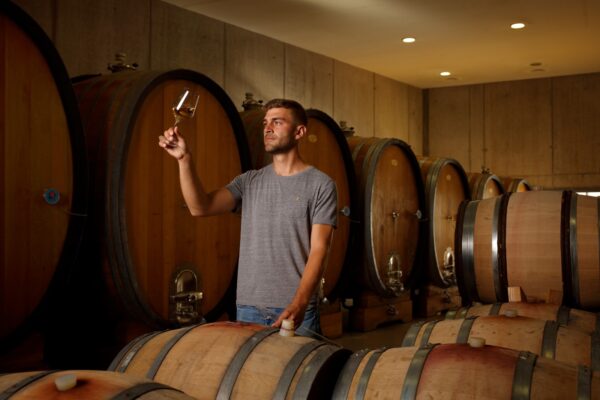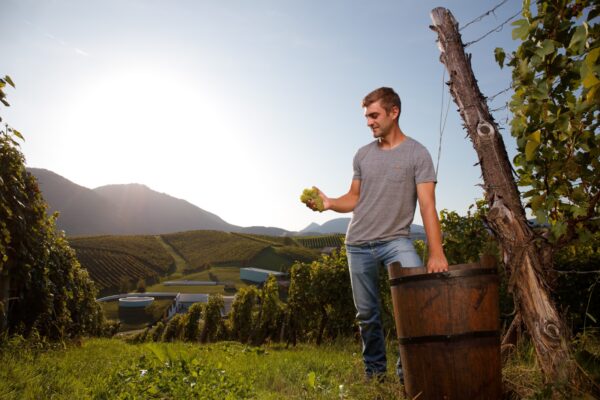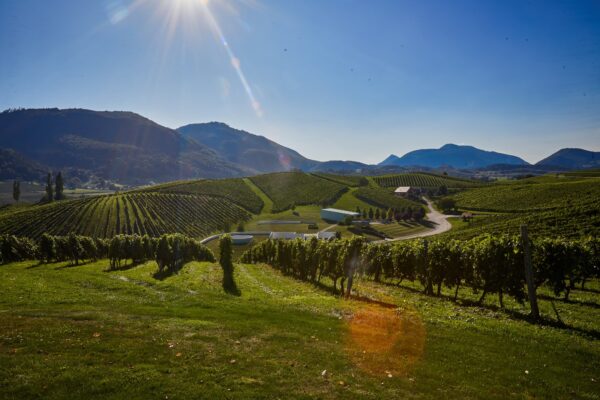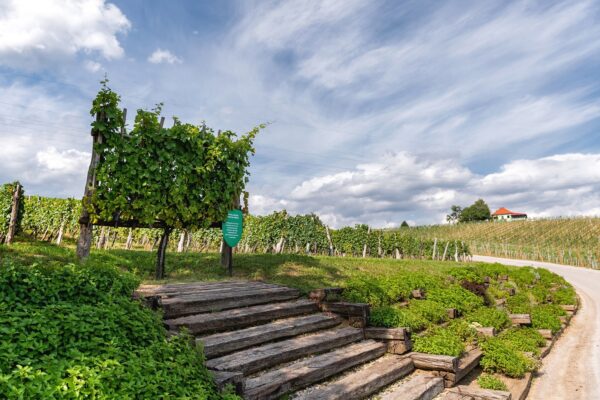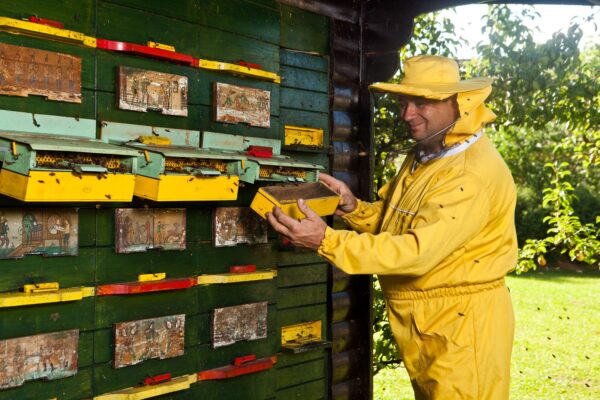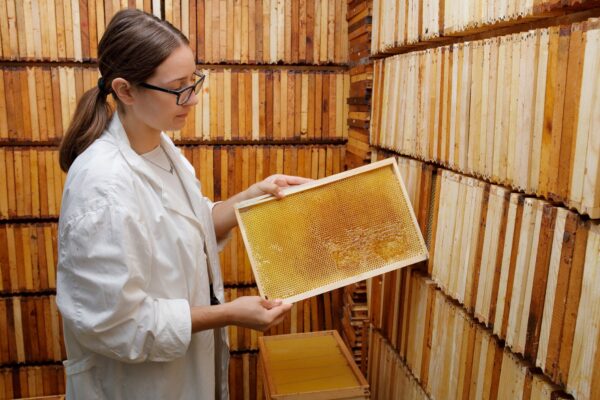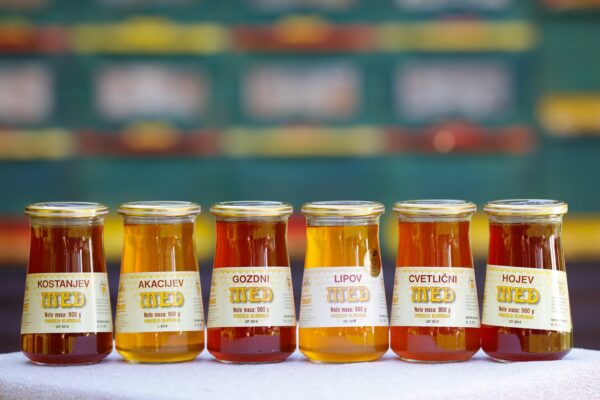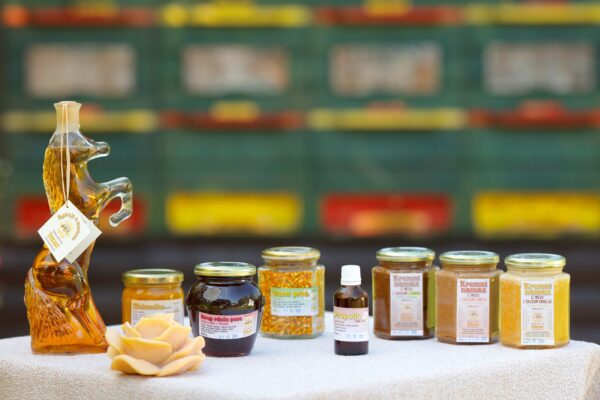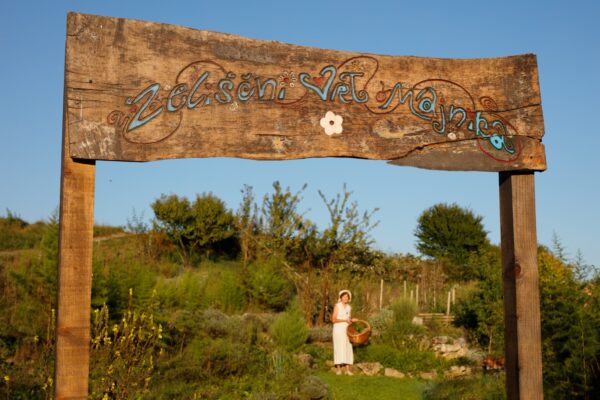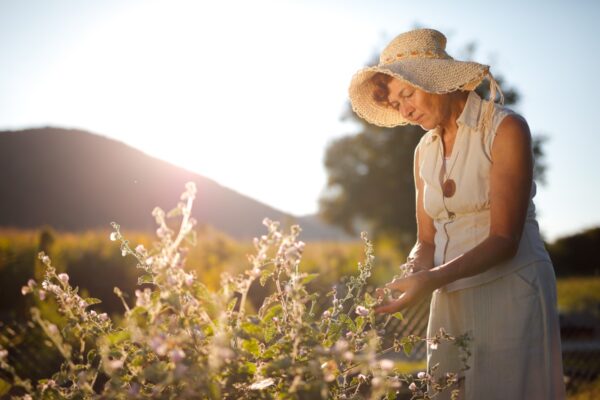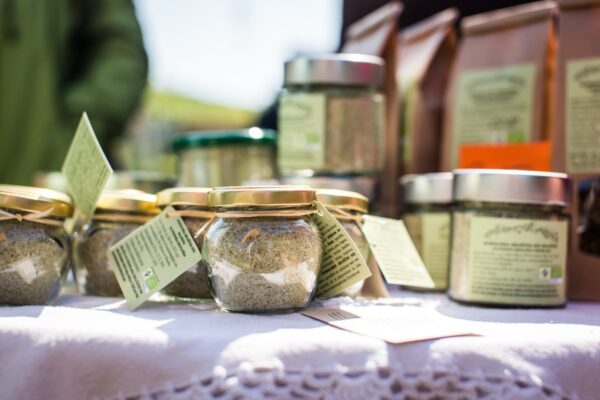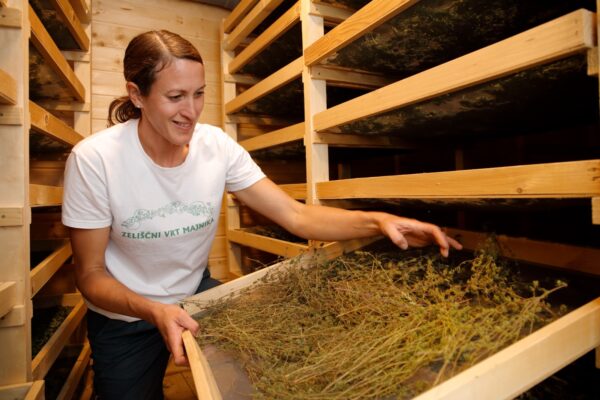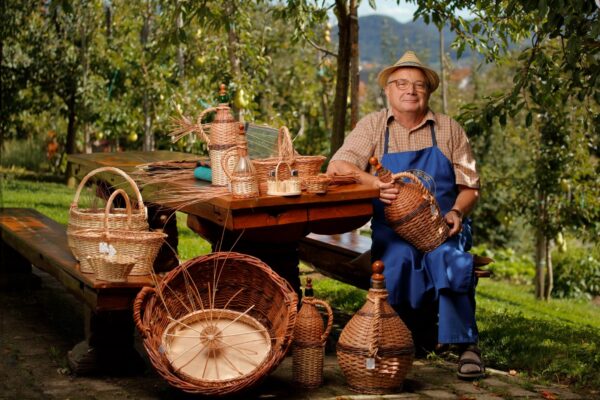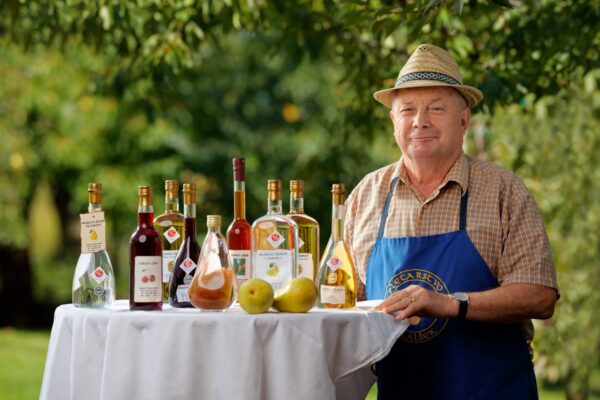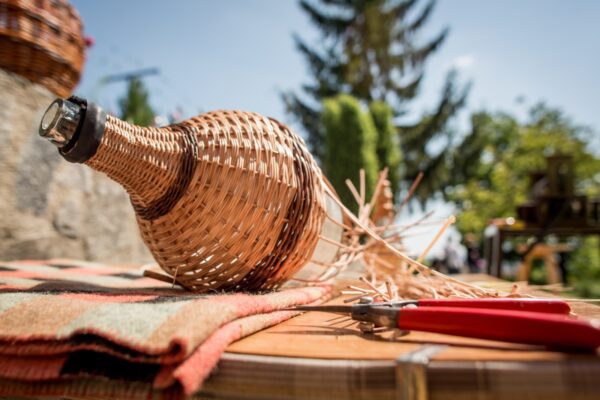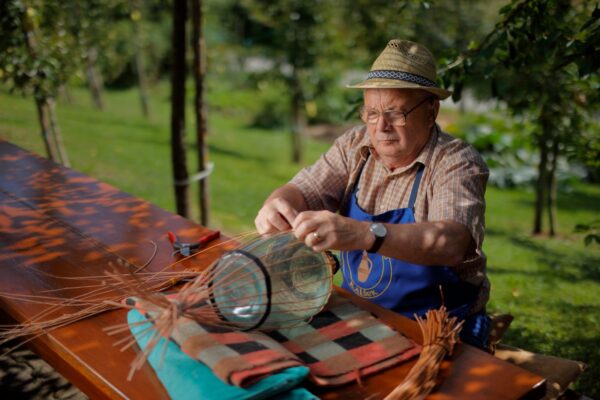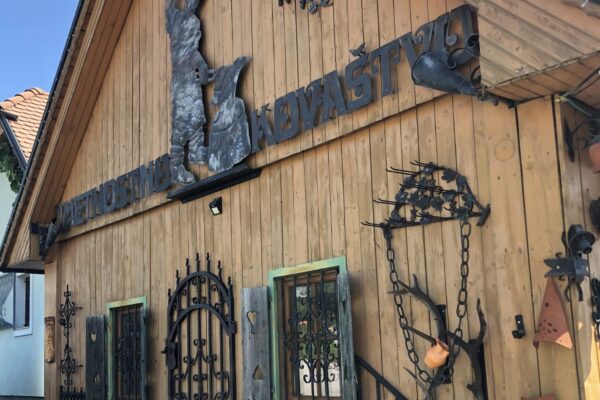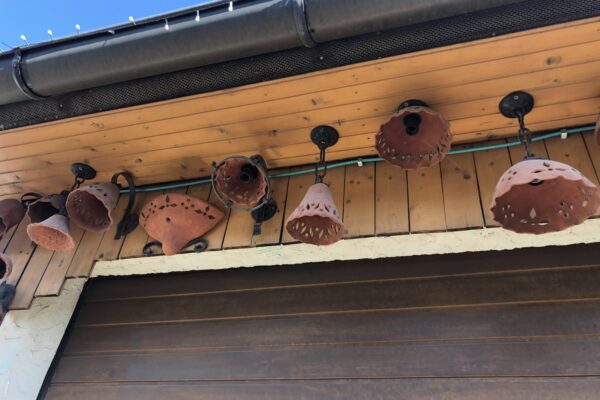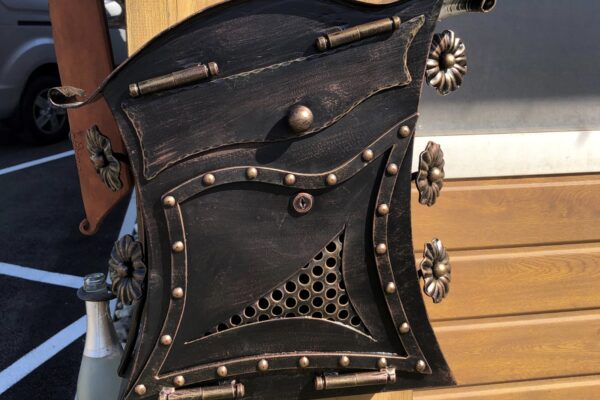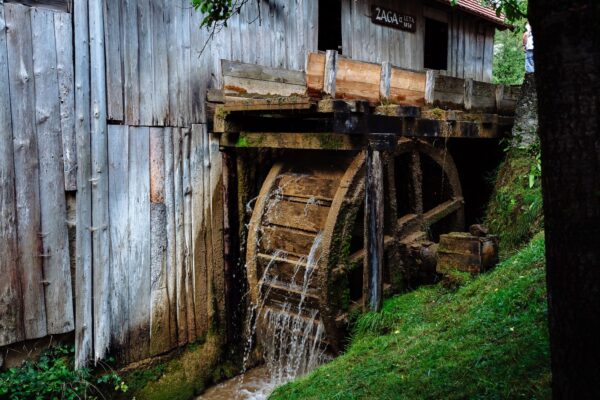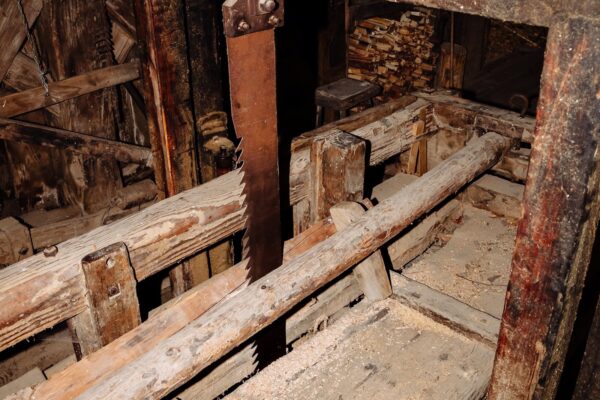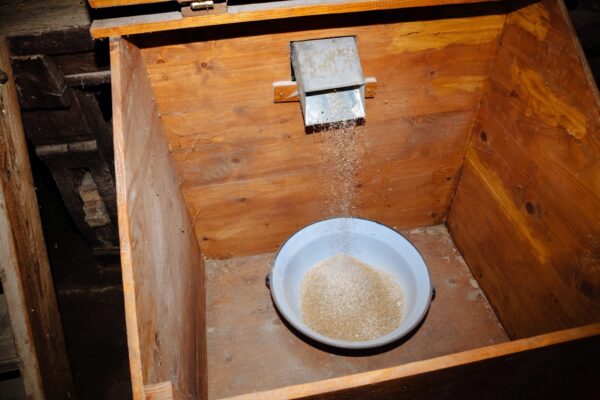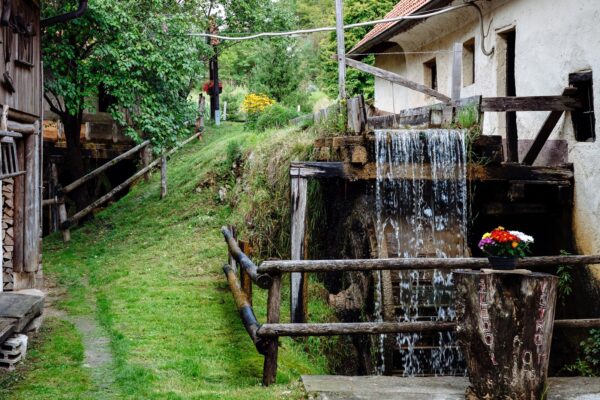Slovenske Konjice and its surroundings
We are situated at the base of the Škalce vineyards, renowned as one of the most picturesque and premier wine-growing regions. This area falls within the Podravje wine-growing region, the Maribor wine-growing district, the Obronki Pohorja – southern Pohorje district, and the Slovenske Konjice narrower district.
The smaller area of Slovenske Konjice contains several loations and the following are better known:
- wine-growing location, Brdo
- wine-growing location, Škalce
- wine-growing location, Polene
- wine-growing location, Špitalič
- wine-growing location, Klokočovnik
- wine-growing location, Žička gorca
- wine-growing location, Lipoglav
- wine-growing location, Zbelovska gora
In our region, the Celts, who preceded the Romans, were already familiar with grapevines. It wasn’t until between 500 and 600 AD that the Slavs, migrating from behind the Carpathian Mountains, became acquainted with them.
The earliest evidence of vineyards in the upper Dravinja hills in Konjice dates back to 1173. References to winegrowing also appear in the written records of the French Carthusian Order from the Žička kartuzija Monastery (1165 – 1782). During his visit to the monastery in May 1487, Paolo Santonino noted in his Travel Diary that the Carthusians possessed more wine in their cellars in the 15th century than all other cellars in the province combined. They cultivated vineyards in prime locations in Škalce, where today, the Zlati Grič Wine Cellar produces 80 hectares of selected grape varieties within a circular complex.
The general economic crisis between 1812 and 1818 affected the entire Austrian Empire and, consequently, the agriculture of the Dravinja Hills. Due to the sharply increased price of wheat, many winegrowers encountered financial difficulties or even incurred debts. Parishes, landowners, and farmers embarked on vineyard renovations, offering a renewed sense of hope for agriculture. Various high-quality grape varieties imported from France, such as Rieslings, Traminers, Muscats, and Burgundians, were cultivated and continue to be renowned today. The introduction of new grape varieties led to improvements in wine quality and, subsequently, in prices. Since winegrowers consumed minimal quantities of wine themselves, they were able to sell the majority of their produce.
Viticulture faced another setback at the end of the 19th century when vineyards were afflicted by the vine louse, an incurable disease originating from America. Many vineyards were decimated, and the vineyard landscapes of the pre-1850 era are unlikely to be revived. Presently, Slovenian winemaking emphasizes quality over quantity. While wine production may be slightly reduced, the focus on quality ensures that Slovenian wines excel, surpassing those produced during the socialist era.
Anyone can attempt to make wine, but only those with an abundance of love, respect, and expertise can craft a premium product that resonates with others. When enjoying wine, it’s essential to contemplate the dedication, free time, and effort (often accompanied by sweat) invested in each drop to achieve its exceptional quality. Individuals capable of producing wine that appeals to others deserve particular admiration and respect.
Žvikart beekeeping proudly upholds a family tradition spanning over 60 years. What began as a modest endeavor with just a few amateur bee colonies has flourished into a thriving operation managing approximately 350 beehives. Their bees roam freely in the pristine wilderness of the expansive Pohorje forests and meadows, as well as in the serene Valley of St. John the Baptist, nestled near the picturesque Žička kartuzija Monastery, a historic monastery dating back to the 12th century.
In addition to offering seven different types of honey—such as floral, acacia, chestnut, linden, forest, and walnut—they also produce pollen, royal jelly, and propolis. Their product line extends to propolis tincture items and a blend called melamine mixture, which combines honey, pollen, propolis tincture, and royal jelly, enriching the healing properties of each ingredient. A recent addition to their repertoire is beetroot juice stabilized with honey, renowned for its high iron content.
For several years, they’ve been successfully crafting and selling honey cream spread, commonly known as cream honey. As an innovation, they now offer cream spreads infused with flavours like hazelnut, vanilla, and cinnamon. While the ancient Slavs cherished mead, modern Slovenians prefer honey brandy and honey blueberry liqueur, perfect for savoring on chilly evenings.
Moreover, they open their doors to visitors, hikers, and tourists exploring Slovenske Konjice. Through guided tours, they showcase their work, equipment, and discuss the vital role of beekeeping in preserving the natural environment, especially to larger groups. Their certified apitherapist assists in selecting products and shares insights into the rich array of bee products available. Recognized for their excellence in apitourism, they earned a Certificate of Excellence in 2003 within the Slovenian beekeeping routes, receiving commendations from three different bee species.
In the village of Žiče, in the immediate vicinity of Kalšek Basket Weaving, lies the charming and captivating Majnika Herbal Garden, offering an impressive collection of over 160 different types of herbs. The garden is a testament to the dedication and hard work of the Temnik family, led by Majda, whose lifelong passion for herbs culminated in the realization of this dream project. Majda’s fascination with herbs dates back to her youth, a passion that was further fueled when she acquired the book ‘Medicinal Plants and Their Use’ by Richard Willfort with her first academic achievement in high school.
The garden serves as a haven for sightseeing, educational activities, and the sale of herbs cultivated in a biodynamic manner. Among their offerings, Majda and Katja are renowned for their signature creation, the herbal salt named Majnika. This unique blend combines traditional Piran salt with 18 varieties of herbs and vegetables. To elevate this already exceptional salt, they introduced a special tuber, resulting in Majnika Premium Herbal Salt, which incorporates a root of light known for its ability to infuse light into the human body.
Curious about the origin of the name Majnika? A visit to Majda and Katja will not only provide insight into this, but also unveil more secrets hidden within their enchanting herb garden.
Herbs from
Žička Kartuzija
Žička kartuzija, Špitalič 9, 3215 Loče
One of the primary endeavors of the Carthusians of Žiče was in the field of medicine. Dating back to the 12th century, a “hospitalus” operated within the lower house, later followed by a public pharmacy since the late 16th century. Reviving this rich tradition of herbalism within the Žička kartuzija Monastery, the Iršič family has been instrumental for years. In the refurbished defensive tower, visitors can explore a myriad of health preparations and savor various herbal delights, all proudly presented under the brand “Herbs from Žička kartuzija”.
The Carthusian
Herb Garden
Žička kartuzija, Špitalič 9, 3215 Loče
The herb garden in front of the Žička kartuzija Monastery is a meticulously designed space, reminiscent of the gardens that once graced the monastery grounds. With over fifty varieties of medicinal plants and a tranquil hornbeam grove, it offers visitors a serene retreat surrounded by a plantation of fragrant rosehips. Since April 2020, the care and upkeep of this cherished garden have been entrusted to Majda and Katja Temnik. A visit to this enchanting garden, coupled with a tour of the historic Žička kartuzija Monastery, promises an immersive experience, reconnecting visitors with nature and the rich heritage of the past, rejuvenating both body and spirit with its unique energy and timeless charm.
The Kalšek – Podkrajšek tourist farm in Žiče specializes in crafting authentic wickerwork products that reflect the traditional craftsmanship of the Dravinja Valley region. Using willow wicker with carefully coated and bleached branches, they meticulously prepare their materials, investing considerable effort and skill into their craft. Visitors to the farm can witness firsthand the intricate process of weaving willow wicker and creating a variety of practical items and charming souvenirs. For those eager to try their hand at weaving, hands-on workshops are also available.
In addition to exploring their wickerwork techniques, guests can indulge in a tasting experience featuring a selection of homemade wines, including Blue Franconian, White Pinot, Yellow Muscat and Sauvignon, along with an array of homemade spirits such as plum brandy, pear brandy crafted from old pear varieties, wine brandy, and blueberry brandy. To complement the tasting, guests can enjoy a homemade snack amidst the serene ambiance of the vineyard-draped slopes of Žička gorca.
In the village of Žiče, you will find “Kokotčeva hiša“, a historic house over 350 years old that once served as the House of Culture. Today, it is a place where the tradition of artistic blacksmithing is being revived.
Art Smithing Kokotec is a small family business specializing in the production of forged fences, courtyard doors, chandeliers, and other custom forged elements. In addition to blacksmithing, they also produce clay products, focusing on clay shaders. Among their clay creations, you’ll find chandeliers, candlesticks, souvenirs, and various items perfect for gifts or festive occasions.
The Žičnica Stream provides ideal conditions for operating the sawmill and mill, which were once vital to the area. At the Bezenšek Homestead, you can find both a mill and a sawmill, which are important parts of our technical heritage.
The mill in Žiče is believed to have been in operation during the time the Carthusians resided at the Žička kartuzija Monastery. Since 1800, the smaller estate with the mill has changed hands several times, yet the brick, thicker part of the mill has been preserved. Eventually, the mill came into the possession of Franc Bezenšek, who, together with his family, completely renovated it in 1999 and constructed a water wheel from naturally twisted wood.
At the Bezenšek Homestead, you will also find a Venetian sawmill, installed on August 12, 1858. This wooden building with a timber sawing device has undergone various changes and improvements over the years. The saw is powered by water flowing onto a large outer wheel, which drives the saw blade to cut the timber.
